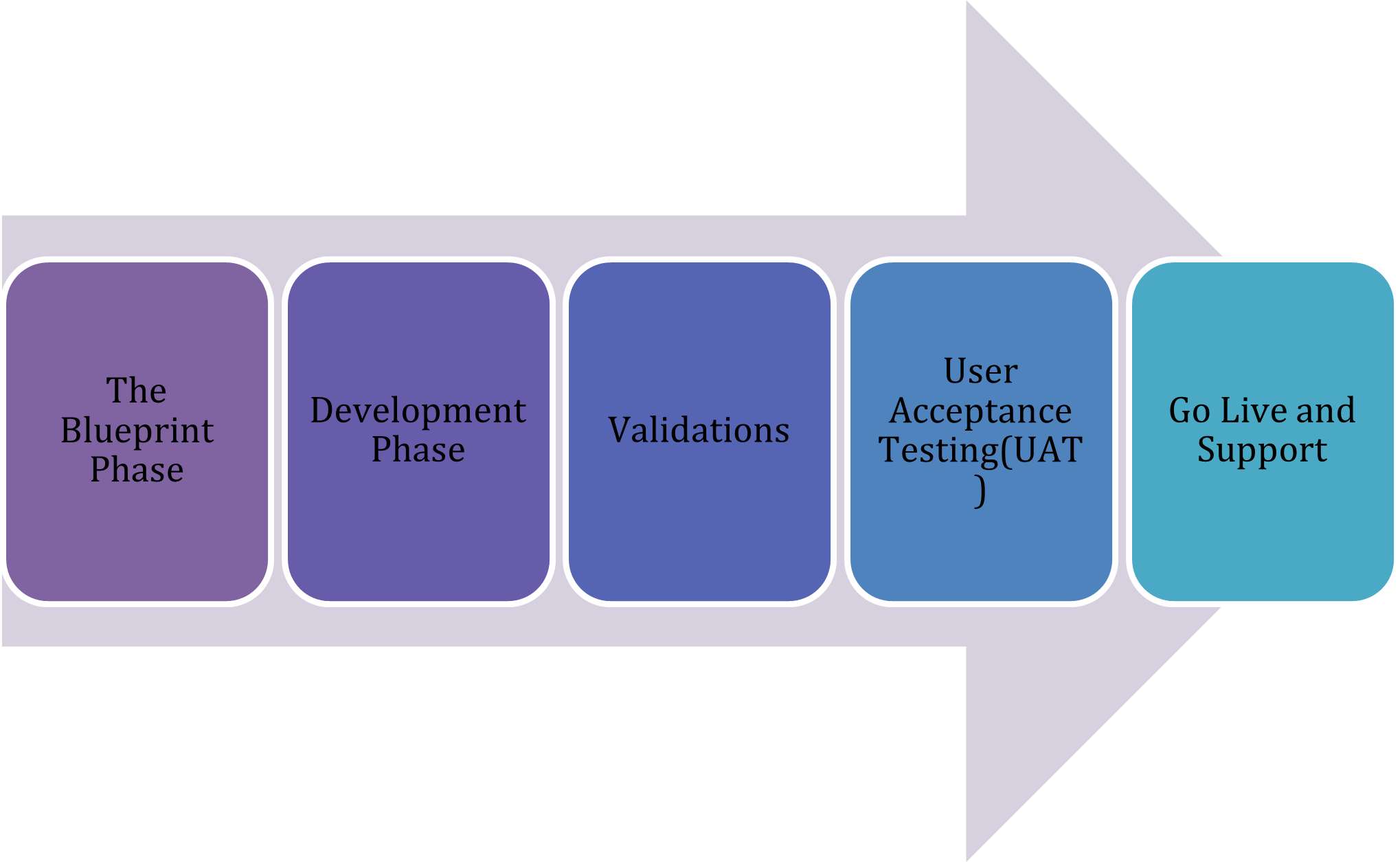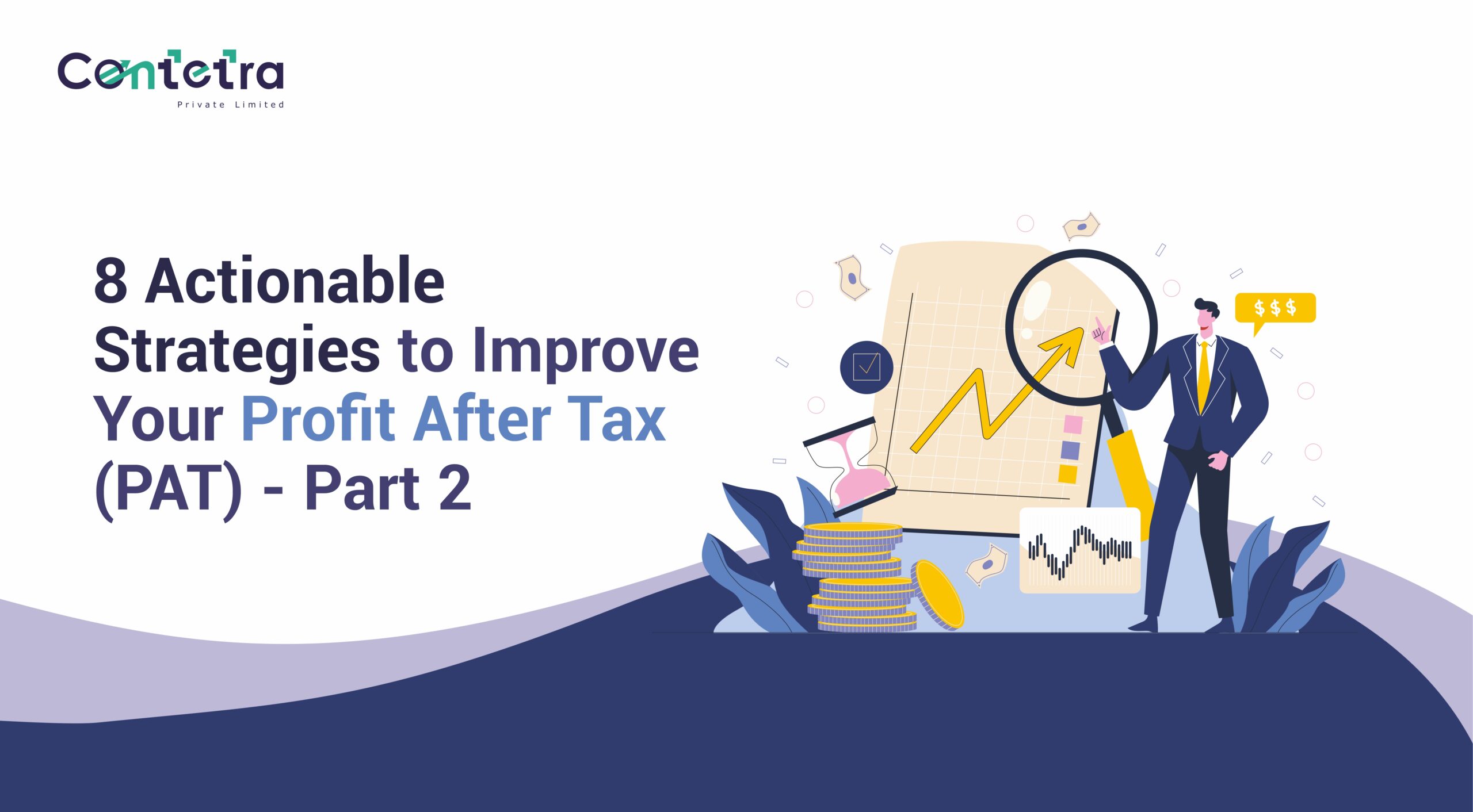Businesses with great ambitions of growth always fall short of something, in most cases it is the lack of ERP Software that holds back businesses from achieving their potential. Even if some businesses do consider implementing an ERP, most end up failing. Over 50% of ERP implementation Projects Fail, according to a study by G2.
So how can you avoid being a part of this statistic?
Scaling a Business the ERP way
An ERP system offers a comprehensive solution by integrating various business processes into a unified system. For growing businesses, these integrations would not only improve operational efficiency but also help in making informed decisions by providing dashboards and reports, laying the foundation for scalable growth.
In our series – ERP Implementation the Right Way! We break down the ERP implementation process. We delve into each step, the process behind it and the importance of it.
So, what does an ERP implementation journey look like? To better understand this ERP implementation process, we will use the case study of Sandy’s Pizzeria.
To better understand this ERP implementation process, we will use the case study of Sandy’s Pizzeria.
Sandy’s Pizzeria
Sandy’s Pizzeria is a well-known food joint for its delicious pizzas. Due to the increasing popularity, the business was growing at a rapid speed.
With this increasing popularity, came increased responsibilities, like:
- Managing operations across multiple locations
- Tracking orders, inventory, and deliveries
- Failing to implement quality checks due to a lack of standard procedures
To tackle these challenges and keep up with the constant growth, Sandy has decided to implement an ERP system in his Pizzeria, guided by effective ERP implementation strategies
Step 1: The Blueprint Phase
We begin with a thorough analysis of the current business processes. The blueprint phase is divided into three steps:
- As Is Process Documentation
- To-Be Process Documentation
- Defining Enterprise Structure
As-Is Process Documentation
What is As-Is Process Documentation?
As-Is Process Documentation involves mapping out the existing business processes to understand how operations currently function. It’s all about getting to know the business & its problems before you start implementing solutions.
For Sandy’s Pizzeria, this step means documenting everything! Right from how orders are taken, and pizzas are made to how ingredients are stocked, and finances are managed. This documentation serves as a baseline for identifying inefficiencies and areas needing improvement. Understanding the business problems first will set us up for a smoother ERP implementation process.
Importance of Documenting As-Is Processes:
- Identify core processes: Documenting the organization’s most critical processes and understanding the core business functions is essential to identify areas for improvement and requirements of the business.
- Pinpoint Pain Points: The process documentation exercise often reveals inefficiencies, bottlenecks, and pain points in existing workflows.
- Define ERP Requirements: The documented processes directly inform the list of functional and non-functional requirements in the ERP.
For Sandy’s Pizzeria, this might reveal issues such as inconsistent inventory management or delays in order processing. Understanding these problems is the first step toward developing effective solutions. Recognizing these problems is the first step toward developing effective ERP implementation strategies.
Methods to Document As-Is Processes:
- Flowcharts: Visual representations of the workflow, showing each step in the process.
- Word Documents: Detailed descriptions of each process, outlining the steps involved and stakeholders.
- Spreadsheets: Organized tables listing processes, responsible parties, and relevant metrics.
To-Be Process Documentation
The stage of ‘To-Be Process Documentation’ involves defining how business processes should operate in the future with the ERP system in place. Here, we create the ideal processes to fix the gaps and discrepancies identified during the ‘As is Process Documentation’.
For Sandy’s Pizzeria, this means creating a new, streamlined workflow that integrates various functions, such as order tracking, efficient inventory management, and getting real-time reports and dashboards.
Why do you Need to Document ‘To Be Processes’?
The purpose of To-Be Process Documentation is to outline the desired state of operations, addressing the inefficiencies identified in the ‘As-Is documentation’. This forward-looking approach helps align stakeholders, understand how to resolve gaps in current processes, visualize how the ERP system will function and provides a clear implementation plan.
Issues that Sandy’s Pizzeria might discover during the ‘As-Is Process Documentation’:
- Inventory Inefficiencies: Frequent stockouts or overstocking of ingredients.
- Order Processing Delays: Inconsistent order tracking and delivery delays.
- Financial Management Issues: Lack of real-time reports and dashboards to give a bird’s eyeview of the finances.
With these issues in mind, the To-Be documentation step outlines new processes to address them, incorporating recommendations from your ERP implementation partners (if you’re looking for Functional ERP Implementation partners, reach out to us here!).
For instance, implementing an inventory management module for Sandy’s Pizzeria might look like this –
- Real-time inventory tracking: Track ingredient usage in real-time, updating stock levels automatically as orders are processed to prevent stockouts and reduce over-ordering.
- Supplier Management: The system should include supplier management features to track orders, manage contracts, and analyze supplier performance. This ensures that the pizzeria gets the best prices and quality for its ingredients.
- Demand Forecasting: Use the ERP’s data analytics capabilities to forecast demand based on historical sales data, seasonal trends, and special events. This will help in planning inventory and labor more effectively.
- Cost Control and Budgeting: The ERP should provide budgeting tools that track costs against projections, offering alerts when spending exceeds planned limits. This helps in maintaining profitability and controlling food costs.
- Scalability: The ERP should be scalable to grow with the business, accommodating new locations or expanded services without requiring a complete overhaul of the system.
Defining Enterprise Structure
With the ERP needs and priorities defined, the next step is establishing an enterprise structure. What is an enterprise structure? It is the organizational framework within a company that defines how different parts of the business are categorized and managed. This is essential for tailoring the ERP implementation strategies to the business’ unique structure.
It is categorized as follows:
- Profit Centers: Tracking the profitability of each pizzeria location helps identify which ones are performing well and which need attention.
These are the individual pizzeria locations within Sandy’s Pizzeria chain. By treating each location as a profit center, Sandy can track the profitability of each one, identifying which locations are performing well and which may need attention.
- Revenue Centers: These are areas of the business that directly generate income, such as dine-in services and delivery services. By categorizing these as revenue centers, Sandy can analyze which service is generating more revenue and make informed strategic decisions.
- Cost Centers: These include departments like the kitchen, ingredient supplies, and marketing, which incur costs but do not directly generate revenue. By monitoring the expenses of these cost centers, Sandy can ensure that resources are used efficiently, and costs are controlled.
Once we are done with understanding Sandy’s business and all the requirements are chalked out, the next step is collating the information from the above and creating a Business Requirement Document or BRD (read our blog for more on creating a BRD here!)
Implementing an ERP system is a transformative step for any business aiming for growth. Sandy’s Pizzeria’s journey tells us about the importance of understanding current processes, visualizing the future, and defining a clear enterprise structure. With these things in place, Sandy’s ERP implementation partners are done with the first phase of his ERP implementation.
This is just beginning their ERP journey, stay tuned for the next blog where the Development Phase of Sandy’s ERP begins!














